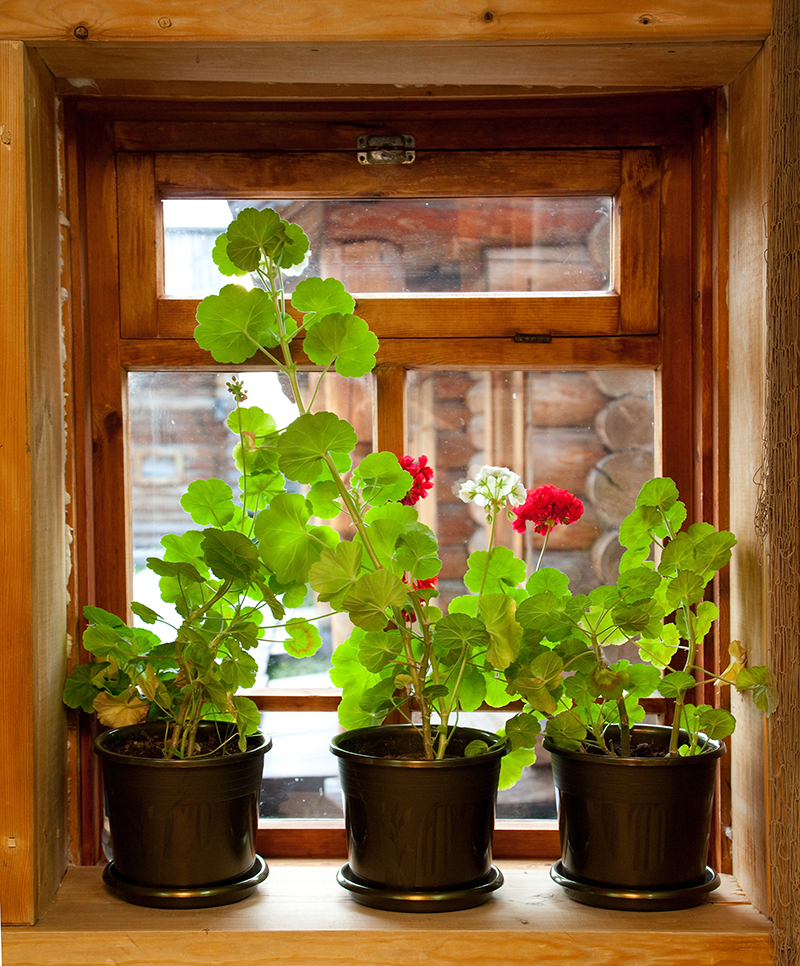Cultivating Orchids: A Care Guide
Posted on 02/09/2025
Cultivating Orchids: A Comprehensive Care Guide
Orchids--with their striking blooms and breathtaking variety--have fascinated gardeners and plant lovers for centuries. While these exquisite flowers have a reputation for being finicky, the truth is that many orchid varieties are surprisingly robust and adaptable when given the right care. In this detailed guide, you'll learn how to cultivate orchids at home, discover essential orchid care tips, and solve the most common orchid problems.

Understanding Orchids
Before diving into care specifics, it's important to understand the basics of orchid biology and why their needs differ from other houseplants:
- Epiphytes vs. Terrestrials: Many commonly grown orchids, such as Phalaenopsis and Cattleya, are epiphytes. They naturally grow in trees, not in soil, absorbing moisture and nutrients from the air and rain.
- Unique Root Structure: Orchid roots are specialized for rapid water uptake and gas exchange. They require excellent air flow and should not be allowed to sit in water.
- Diverse Species: There are more than 25,000 species and over 100,000 hybrids, but a handful of genera--Phalaenopsis, Dendrobium, Cattleya, Oncidium, and Paphiopedilum--make up the majority grown by enthusiasts.
Understanding these fundamentals is vital for successful orchid cultivation.
How to Choose the Right Orchid
Not all orchids are created equal--especially when it comes to home growing conditions. Here's how to pick the best orchid for your skill level and environment:
Beginner-Friendly Orchid Varieties
- Phalaenopsis (Moth Orchid): Often considered the easiest orchid for beginners due to their forgiving nature and ability to bloom multiple times a year. Moth orchids thrive in ordinary home conditions.
- Dendrobium: These produce spectacular sprays of blossoms and adapt well to household environments.
- Cattleya: Known for their fragrant, showy flowers, Cattleya orchids need a bit more light but are otherwise robust.
Advanced and Specialist Orchids
- Vanda: Require high humidity and bright light--ideal for experienced growers.
- Paphiopedilum (Lady's Slipper): Prefer cooler temperatures and moist conditions, great for those ready for a challenge.
Orchid Cultivation: Step-by-Step Care Guide
Proper orchid care is all about mimicking their natural environment, focusing on the right light, water, humidity, potting mix, and nutrition.
1. Light: The Key to Healthy Orchids
- Phalaenopsis and Paphiopedilum: Prefer medium to low light (east-facing windows are ideal). Too much light causes leaf yellowing; too little produces lanky growth and inhibits blooming.
- Cattleya, Dendrobium, Oncidium: Require bright, indirect sunlight. South or west-facing windows with filtered light are best.
- Tip: If leaves are dark green, the orchid may need more light. Light green leaves indicate ideal lighting.
2. Watering Orchids Properly
- Watering Frequency: Orchids like to dry out slightly between waterings. In general, water once a week, but always check the potting medium first.
- Water Quality: Use room-temperature, non-softened water. Rainwater or distilled water is ideal for sensitive species.
- Avoid standing water! Let water drain completely from the pot, as orchid roots rapidly rot if left soggy.
3. Humidity and Air Circulation
- Ideal Humidity: Orchids thrive at 40%-70% humidity. In dry homes, use a humidity tray (pebble tray with water) or run a humidifier nearby.
- Air Movement: Good airflow prevents fungal diseases. Use a small fan on low near your orchids, especially in enclosed rooms.
4. Choosing the Best Orchid Potting Mix
- Orchid Mixes: Never use regular potting soil. Instead, opt for mixes containing bark, sphagnum moss, perlite, and sometimes charcoal.
- Repotting Frequency: Repot orchids every 1-2 years, or when the bark mix has broken down or roots outgrow the container.
- Drainage! Ensure pots have plenty of drainage holes.
5. Fertilizing Your Orchids
- Fertilizer Type: Use a balanced fertilizer formulated for orchids (e.g., 20-20-20) or one specific for blooming plants.
- Frequency: Feed lightly--typically every 2-4 weeks during active growth. "Weakly, weekly" is a popular motto among orchid enthusiasts. Dilute fertilizer to half the recommended strength.
- Flush the mix with water monthly to prevent fertilizer buildup.
Common Orchid Problems and Solutions
Even expert growers encounter challenges. Here are the most common orchid care issues and how to address them:
1. Orchid Not Blooming
- Light: Is your orchid getting enough light? Move it to a brighter spot if necessary.
- Feeding: Overfeeding or underfeeding can hinder flowering. Stick to a balanced routine.
- Temperature Drop: Some orchids, such as Phalaenopsis, need a slight temperature drop at night to trigger blooms.
2. Yellow Leaves
- Watering issues: Overwatering is the main cause. Allow the medium to dry between waterings.
- Natural shedding: Old leaves turning yellow and dropping is normal as orchids grow.
3. Root Rot
- Poor drainage: Always use an airy potting mix and a pot with ample drainage holes.
- Signs: Mushy, brown roots; wilting; sour odor. Prune away affected roots and repot in fresh mix.
4. Pests and Diseases
- Common pests: Aphids, mealybugs, and spider mites. Remove with insecticidal soap or neem oil.
- Mold/Fungal Issues: Keep leaves dry, provide airflow, and remove infected material promptly.
Advanced Tips for Cultivating Healthy Orchids
Once you've mastered the basics of growing orchids, try these expert tips to take your collection to the next level:
- Group orchids together to boost local humidity levels.
- Experiment with mounting: Try mounting orchids on bark slabs or cork, simulating their natural epiphytic habitat.
- Adjust seasons: Some orchids need a "cool period" in fall or winter to bloom--move them to a cooler spot or near a drafty window for a few weeks.
- Monitor with a moisture meter for greater watering accuracy.
- Keep a culture sheet for each species or hybrid, noting care preferences and bloom times.
Orchid Repotting and Propagation
Steps for Repotting Orchids
- Remove the orchid gently from its pot.
- Trim away any dead or rotten roots with sterilized scissors.
- Place the orchid in a new, clean pot with fresh orchid mix. Set the roots down and fill in gaps with bark chips or moss.
- Do not water immediately. Wait a few days to allow the plant to heal before resuming the regular watering schedule.
Orchid Propagation
- Division: Sympodial orchids (like Cattleya and Dendrobium) can be divided when you repot, separating healthy pseudobulbs into new plants.
- Keikis: Some orchids, like Phalaenopsis, produce baby plants called keikis. Once keikis have grown a few roots, they can be detached and potted up separately.
Creating the Ideal Orchid Display
Cultivating orchids is not just about keeping them alive--it's about enjoying their beauty! Consider the following display ideas:
- Grouping orchids in a humidity tray not only assists with moisture but makes an eye-catching indoor garden.
- Hanging baskets or wall mounts can showcase epiphytic species in dramatic fashion.
- Terrariums: Miniature orchids thrive in enclosed glass containers with indirect light and high humidity.

Frequently Asked Questions About Orchid Cultivation
How long do orchid flowers last?
Depending on the type, orchid blooms can last from a few weeks to several months. Phalaenopsis is famous for blooms that last up to three months or more.
How often should I repot my orchid?
Orchids should be repotted every 1-2 years or when the potting medium breaks down. Repotting is also necessary if the plant outgrows its container or you notice signs of root rot.
Can orchids grow in regular potting soil?
No. Always use a specially designed orchid potting mix, which provides the proper airflow and drainage that orchid roots require.
Why are my orchid's leaves wrinkled?
Wrinkled or shriveled leaves indicate uneven watering, dehydration, or damaged roots. Examine the roots and adjust watering frequency as needed.
When do orchids bloom?
Most commonly grown orchids bloom once per year, but some, like Phalaenopsis, can flower more frequently under optimal care.
Conclusion: The Rewarding Journey of Orchid Cultivation
Cultivating orchids offers a blend of challenge, education, and immense beauty. By understanding their unique needs--particularly regarding light, water, and air flow--you can maintain a thriving collection that will dazzle for years. Remember; start with beginner-friendly orchids, provide attentive care, and don't hesitate to experiment. With patience and observation, anyone can enjoy the artistry of growing orchids at home.
For more information on orchid varieties and care, join an orchid society or connect with fellow enthusiasts online. Happy growing, and may your orchids flourish!
Latest Posts
The Fascinating Connection Between Peony Colors and Symbolism
Ensure Lush Bloom with These Hydrangea Care Tips
Enduring Blooms: The 12 Flowers That Last the Longest






